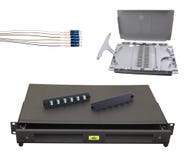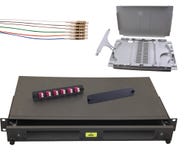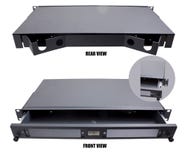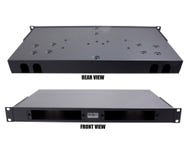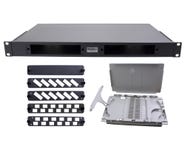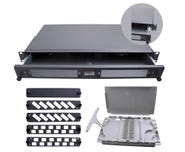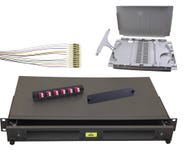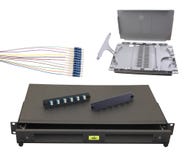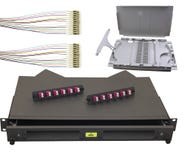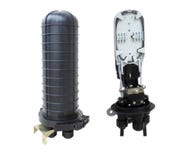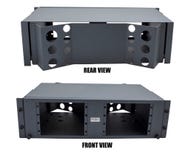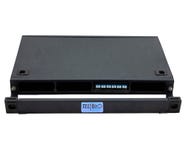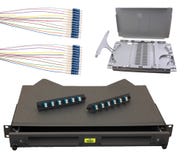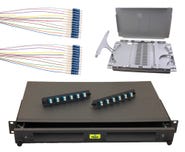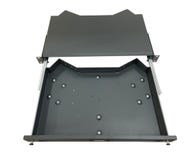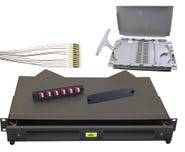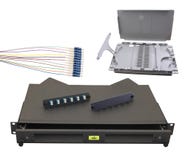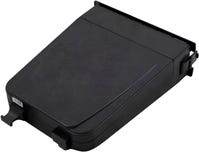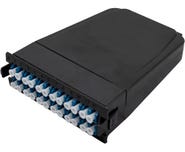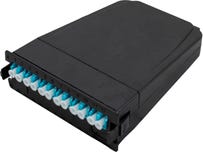

FOBOT Buying Guide
In this informative article, we will provide a basic buying guide for FOBOTs or “Fibre Optic Break Out Trays” so that you can choose the right product for your specific needs. However, before we look at what you should consider before making a selection, we will briefly explain to you what is a FOBOT and some of its features.
What is a FOBOT?
A FOBOT or “Fibre Optic Break Out Tray” is an essential component that organises, protects, and manages optical fibres and their associated connectors and splices. These trays are also known as fibre optic splice trays or fibre optic splice cassettes and are primarily used in fibre optic network installations.
FOBOTs provide a structured platform for arranging and organizing optical fibres, and they also ensure that the fibres are neatly routed and properly spaced, preventing tangling or excessive bending that could lead to signal loss or damage.
Primary features of a FOBOT
- Breakout trays protect optical fibres, connectors, and splices from physical damage, dust, moisture, and other environmental factors that can degrade signal quality or disrupt network performance.
- These trays often have designated routes and channels for guiding and securing fibre optic cables. Proper cable routing ensures that the cables maintain their bend radius and do not become tangled, which can affect signal transmission.
- They come in various sizes and configurations to accommodate different numbers of optical fibres and connectors.
- FOBOTs can be mounted in various ways, including rack-mounted, wall-mounted, or installed within fibre optic splice closures or enclosures.
- Many trays have labeling and documentation options to help network technicians and administrators correctly identify and document fibre connections.
Now, we will move into the primary section of this informative article, where we will provide a buying guide for FOBOTs to assist you in selecting the most appropriate product.
FOBOT Buying Guide
Compatibility
Firstly, ensure that the FOBOT or breakout tray you choose is compatible with your fibre optic infrastructure, including the type of fibre connectors. You should also consider the tray size since different sizes accommodate various fibres, so select one that suits your requirements.
Capacity
Determine the number of fibre optic cables and connectors you need to accommodate within the tray. Breakout trays come in various configurations, such as 12-fibre, 24-fibre, or even higher capacities. So, choose a capacity that matches your current and future needs.
Material & Build Quality
Always try to select a FOBOT that is made from high-quality materials, such as durable plastics or metal. The materials should be robust and resistant to environmental factors like temperature changes and humidity.
Accessibility
One should also consider the ease of access to the fibres and connectors within the tray. Some trays have slide-out or hinged designs that make accessing and managing the fibres easier, especially when performing maintenance or repairs.
Splicing Capability
If you plan to splice fibres within the tray, ensure your FOBOT has built-in splice holders and management features. Some trays come with splice sleeves and holders to simplify the splicing process.
Cost Effective
Before buying a FOBOT, you should compare the prices and features of different brands and models. Although cost may be a significant factor, always try to prioritize quality and functionality to ensure reliable long-term performance.
Future Expansion
Consider your future needs. If you anticipate growth in your fibre optic network, opt for a FOBOT or breakout tray that can accommodate additional fibres or connectors without significant modifications.
Conclusion
As promised at the beginning of this article, we have provided a basic buying guide for FOBOTs. So, consider all the points mentioned in this informative article and if you need further assistance to purchase the most appropriate product for your project, contact our experienced team.
Recent Articles
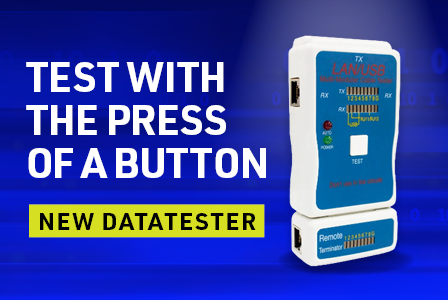
Test Network Cabling & Patch Cords FAST with the New DATATESTER by CABAC
Testing LAN cables is quick and easy when you’ve got the new CABAC DATATESTER on hand. This budget LAN cable tester is perfect for contractors who need to test data and coaxial cable for correct termination.
View Products
Exploring the Advantages of Thin Patch Leads
For Australian data installers, selecting the right network components is critical to achieving the performance and reliability that your customers expect. Among these components, the humble patch lead plays a crucial role in interconnecting various devices.
View Products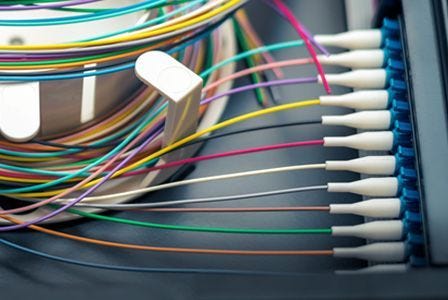
FOBOT Buying Guide
In this informative article, we will provide a basic buying guide for FOBOTs or “Fibre Optic Break Out Trays” so that you can choose the right product for your specific needs.
View Products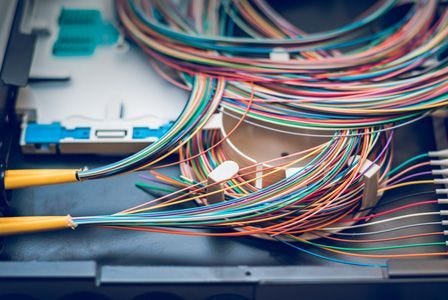
What is a FOBOT?
In this article, we will explain what a FOBOT is and where they are used. We will also describe how a FOBOT works and the important role this component plays in managing and distributing optical fibres efficiently. So, if you're looking to learn all about FOBOTs, make sure to read this article...
View Products
What is the difference between OS1 and OS2 Singlemode Optical Fibre?
This technical article delves into the differences between OS1 and OS2 Singlemode fibre optics, including their core characteristics, performance specifications, and ideal applications.
View Products
